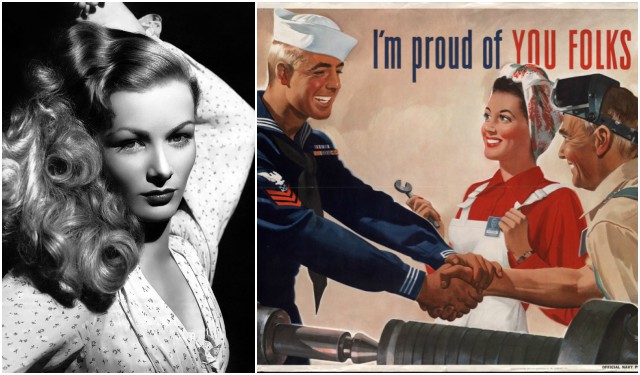World War II was the deadliest conflict in human history and the centerpiece of the 20th century. There is no doubt that soldiers fighting on the front lines were the ones most affected, but we must never forget the people who remained on the home front. World War II changed society drastically, including the role of women.
Overnight, women were required to do things they had previously been restricted from doing and take over a number of traditional male roles, including working in munition/ammunition factories and other areas of heavy industry.
With many of the men being mobilized, factories lacked workers and propaganda kicked in, inspiring women to contribute to the war effort. The government used all mediums available to motivate women to start working in factories across the country. Women were instrumental in the war effort, especially in the United States, where their role on the home front was as important as the role of men sent overseas to fight.
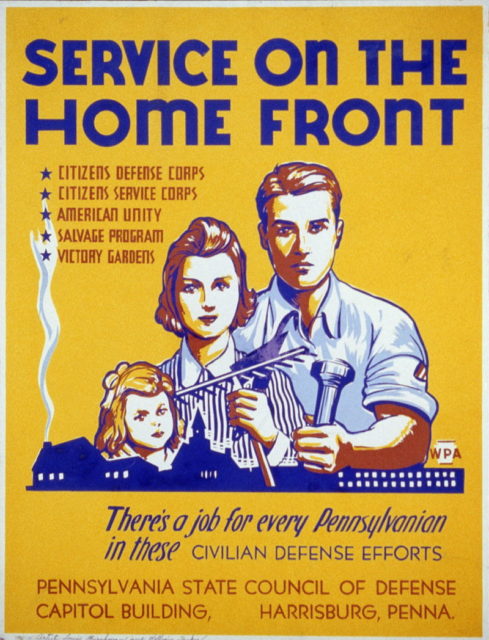
Everywhere people looked there was propaganda, from posters, commercials, and radio to TV shows and films; everything was aimed at influencing the people of the United States, especially women, to stand up for their country and help win the war.
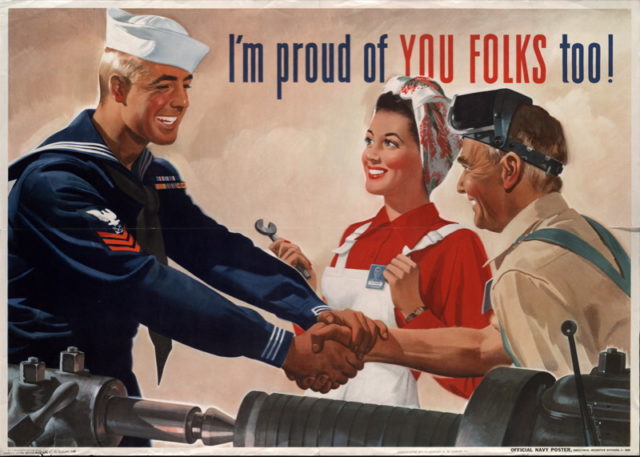
The movie industry had the greatest impact when it came to propaganda, and during World War II, over 300 Hollywood motion pictures were released that are still considered the basics of war propaganda in the United States. However, movies were simply not enough to boost people’s morale. The leading Hollywood stars entertained troops overseas and led recruitment and bond drives back home. Many of them left the comfort of Hollywood to join the Army and fought in many battles across the world.
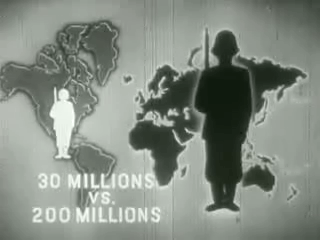
The propaganda paid off as more and more women started working in the factories, replacing the men who went overseas to fight; however, as the war progressed, efficiency had to be at the highest possible level and so the government paid attention to even the slightest details. Details such as more practical, safer hairstyles for women working in the factories came into focus as problems were arising when it came to hair.
The solution was to seek the aid of the ever-influential Hollywood community and specifically from the actress Veronica Lake. Born in Brooklyn in 1922, Lake lived in Florida before moving to Los Angeles, where she progressed from extra to bit player to supporting roles until 1940, when she drew attention for her role in the film I Wanted Wings. In the film, her hair fell over her right eye, creating her trademark look. She became “the find of 1941,” and appeared in a series of noir films with Alan Ladd.
Lake was the first to step forward, risking her career to promote safer hairstyles for women working in factories. Known for the trademark peek-a-boo hairstyle, Lake had originally inspired many young women to imitate this kind of hairstyle. However, this proved to be quite impractical for women working in war production plants as valuable time was lost to bring the uncontrolled hair back into place.
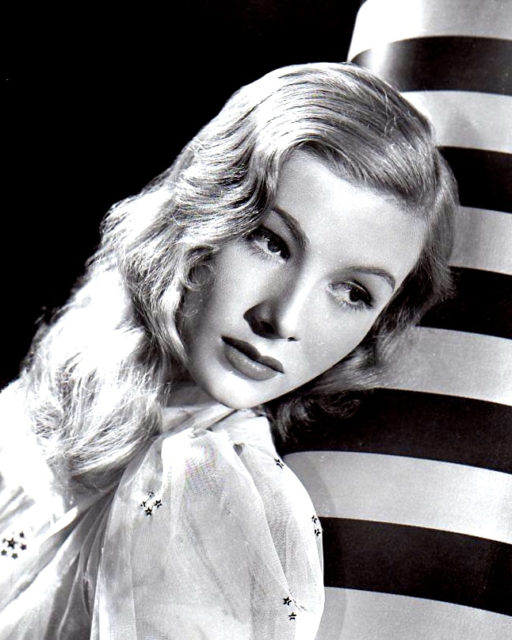
Working in factories required precision and uncontrolled hair was considered one of the main problems challenging this requirement. For instance, there were many cases in which hair got caught in the machines and production had to be put on hold until the problem was solved, and since every minute was precious, something had to be done to change this.
The hairstyle that made Lake famous and that quickly influenced women throughout the United States had to be changed, and it was the actress herself who took the first step towards doing this. She realized how impractical this hairstyle was for women working in the factories and decided to put glamor aside so that she could help the war effort.
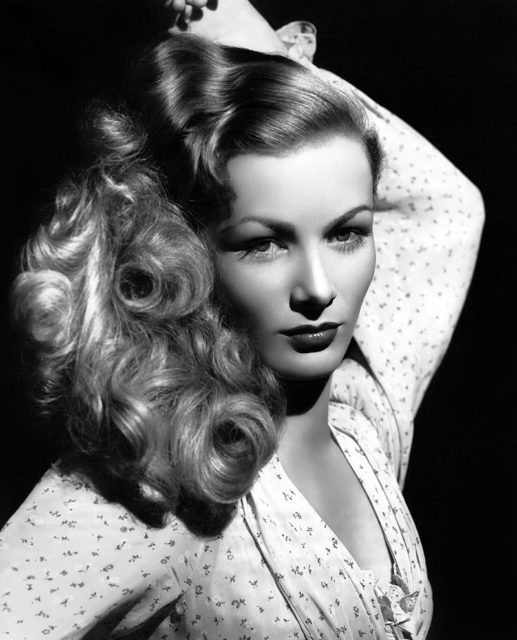
Lake decided to put her hair up and by doing so inspired many others to follow her lead once again. She was praised for her unquestionable patriotism but ultimately many believe that the change of her hairstyle might have damaged her career.
We can not be sure if this was the reason that her career faltered or if it was something else, but Paramount Pictures decided not to renew her contract and by the end of the 1940s, her career in film was effectively over. Nonetheless, Lake had few regrets. Most importantly, Lake stuck by her values and supported what she believed in.
